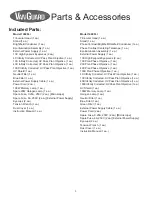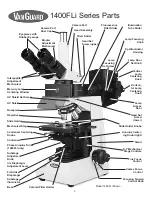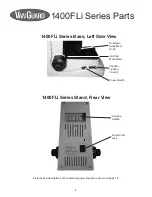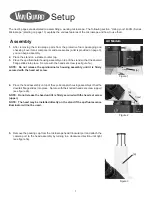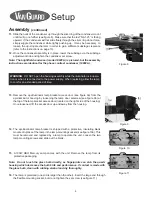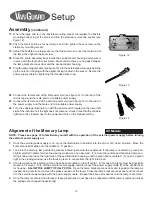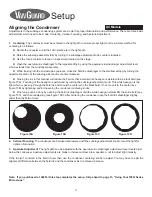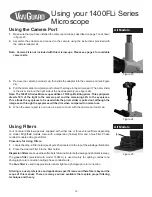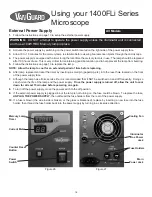
17
1.
Select the desired magnification by choosing the appropriate objective. It is usually easiest to focus initially by using
brightfield or phase contrast.
2.
For non-fluorescence operations, it is not necessary to turn off the power supply. Instead move the
illumination tube
slider
into the 1st or “blocked” position.
3.
Once the specimen is in place, switch to epi-illumination by moving the illumination tube slider into the 2nd or 3rd “open”
position. Select the appropriate filter cube by moving the
fluorescence filter slider
into the “B” or “G” position. For the
blue filter, push the fluorescence filter slider all the way to the left. For the green filter, pull the fluorescence filter slider
all the way to the right. The “0” (off) position is located halfway between the blue and green filter cubes.
Position
B
G
Color
blue-green
green-red
Excitation
430-490nm
480-550nm
Emission
520nm
590nm
Intended Dyes
FITC, Acridine Orange
Ethidium Bromide, Propidium Iodide & TRITC
SAFETY WARNING
Fluorescence Viewing
Using your 1400FLi Series
Microscope
100W HBO Short-Arc Mercury Lamps
The supplied 100W HBO Short-Arc Mercury Lamps have a discharge vessel made of high optical quality quartz glass containing
mercury and a noble gas. The special characteristics of HBO lamps are extremely high luminance, strong ultraviolet radiation,
good luminous efficacy, and high arc stability.
UV Radiation and Glare
During operation, HBO lamps generate intensive radiation in the ultraviolet and visible range due to the high luminance of
the arc. When inadvertently touched, it should be degreased immediately with spirit and a soft, lint-free cloth. Afterwards,
gently wipe the quartz envelope until dry.
WARNING
: Avoid prolonged exposure to unfiltered ultraviolet light.
HBO lamps should be replaced as soon as the bulb shows advanced blackening, otherwise the risk of the lamp bursting is
greatly increased. With normal operation, a lamp burst is very unlikely. In the rare case that an HBO lamp bursts and the
mercury is released, it is recommended that all personnel should leave the immediate area
at once
, so that no mercury
vapor is inhaled. The area should be thoroughly ventilated for a minimum of 30 minutes.
All Models
All Models
All Models

